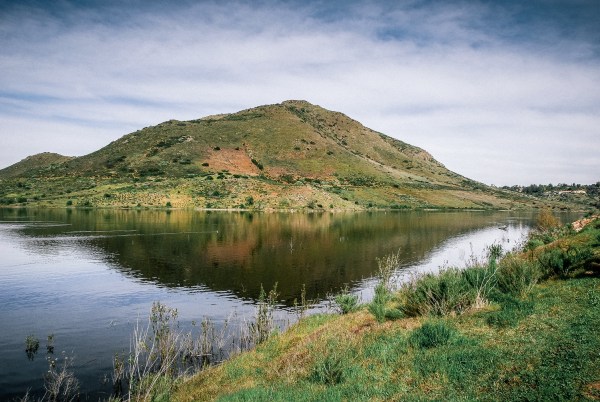Imagine a land known for surfing, wine, apple pies and yes, a long-distance trail. Welcome to the Coast to Crest Trail, which starts seaside in Del Mar, California, and is planned to travel 70 miles east through wetlands, chaparral, open meadows and dense forests to 5,850-foot Volcan Mountain, the source for the San Dieguito River.
The trail, which offers more than 45 miles of year-round recreation for hikers, bikers and equestrians, passes through the budding wine region of Ramona and ends near the town of Julian, famous for its pies. Another 20 miles of local trails connect communities to the Coast to Crest Trail.
The Coast to Crest Trail was first dreamed up in 1986, when a group of friends—all conservationists who worked as artists, marine biologists, scientists, psychologists and more—gathered around the dinner table and lamented the loss of wildlife habitat, native plants and open space in the San Diego area due to the real estate boom of the 1980s. They formed the San Dieguito River Valley Conservancy, which shares and protects the valley by encouraging recreation and restoring natural habitat.

Along the Coast to Crest Trail you can experience the wetlands of San Dieguito Lagoon, traverse Lake Hodges crossing the longest stress-ribbon bridge in the world, enjoy panoramic views from 4,052-foot Black Mountain Peak, and trek through Pamo Valley, a three-mile-long river valley bordered by granite peaks.
It is in Pamo Valley, in the backcountry foothills of San Diego, where current trail projects are in the works to close one of the last remaining gaps on the Coast to Crest Trail.
“There are a few critical links missing and the Pamo Valley segment is one of those vital links,” says Trish Boaz, executive director of the San Dieguito River Valley Conservancy. “The segment is three miles long but will connect two existing segments, one west to Boden Canyon and the other east to Lake Sutherland.”
The total trail segment will be 12 miles in length, and the project will also include two new trailheads to improve access.
“When this is completed, hikers, bikers and equestrians will be able to enjoy an area not currently open to the public for recreational purposes,” says Boaz. “Two staging areas will provide ease of access.”
Hikers on the trail will be treated to San Diego County’s extensive biodiversity—the trail traverses urban, rural and remote areas and provides a diverse array of flora and fauna, from red-tailed hawks to manzanita and sage.
“You really do feel like you’re in the wilderness when you’re out there,” says Boaz. “Many first-timers cannot believe they feel so remote, so close to their homes.”
REI will donate $5.9 million in 2015 to help care for and increase access to more than 1,000 outdoor places in the U.S.
